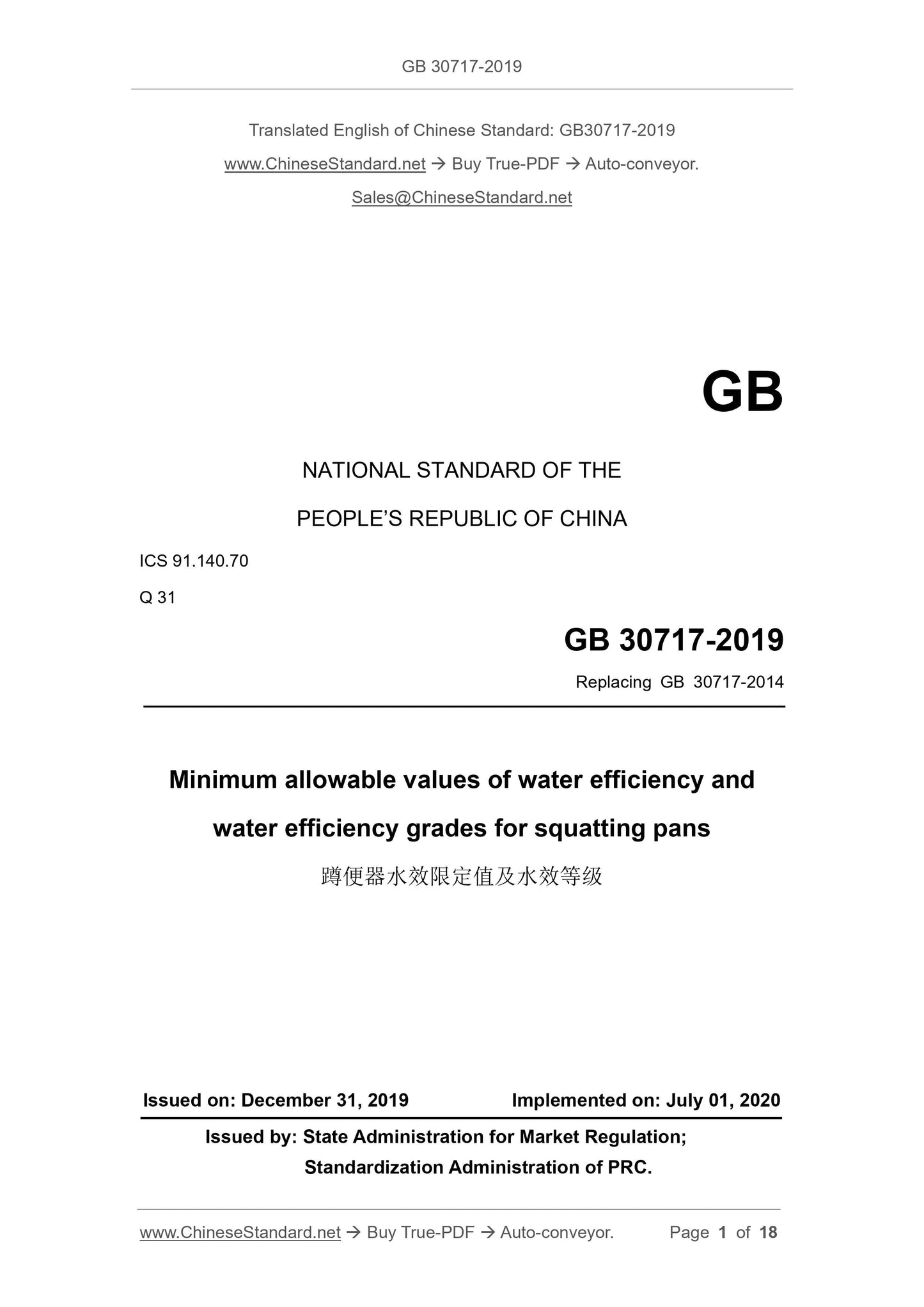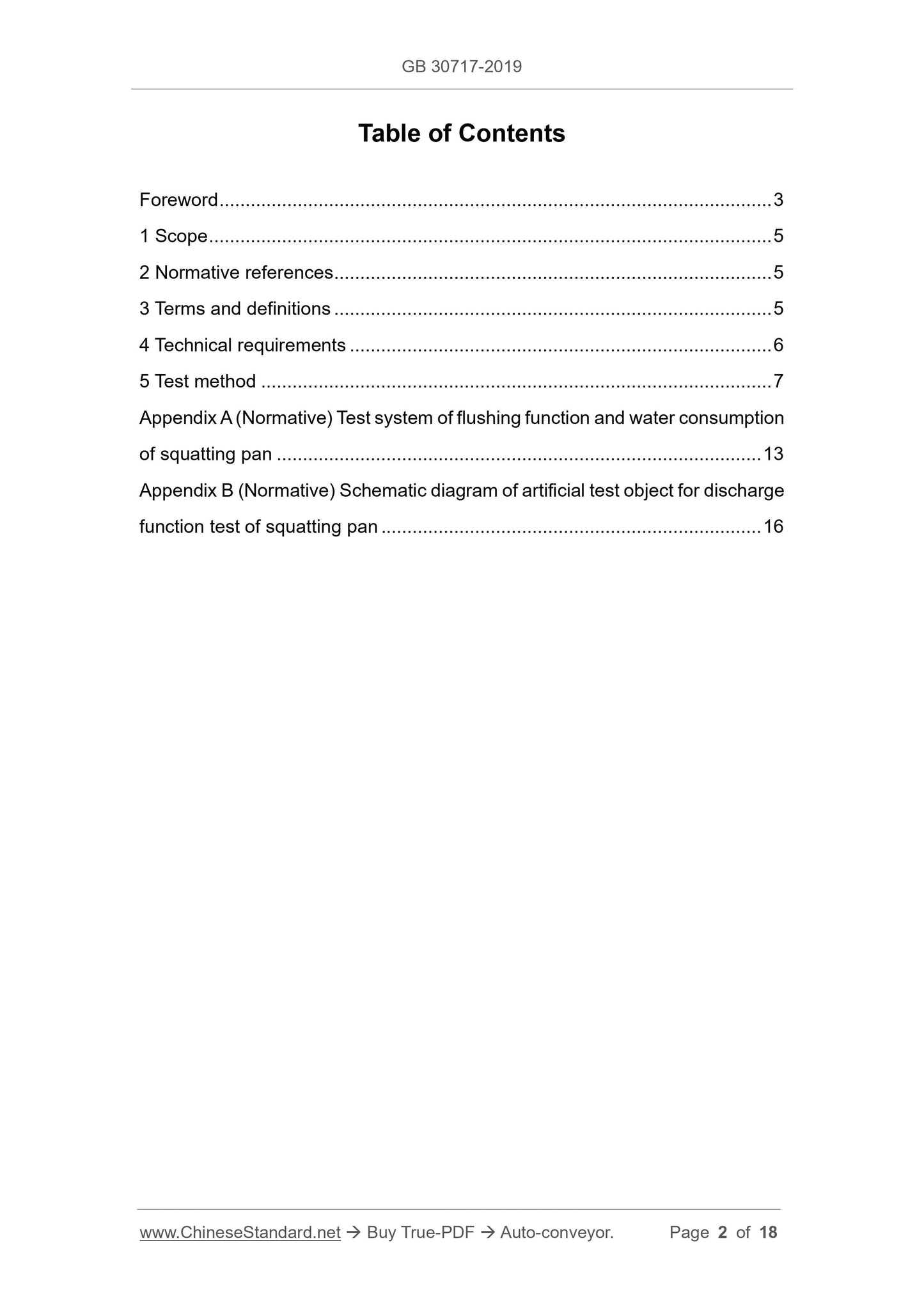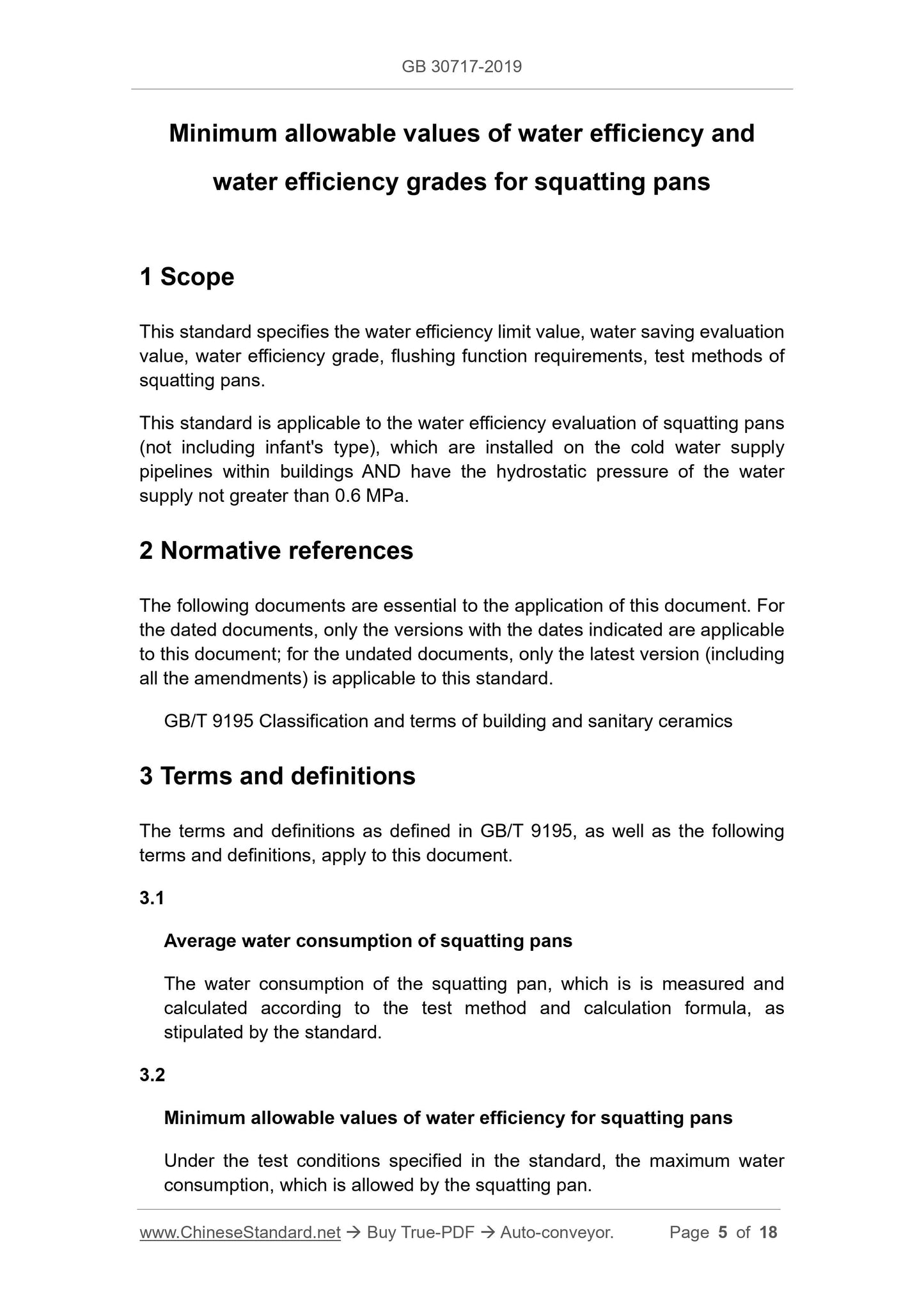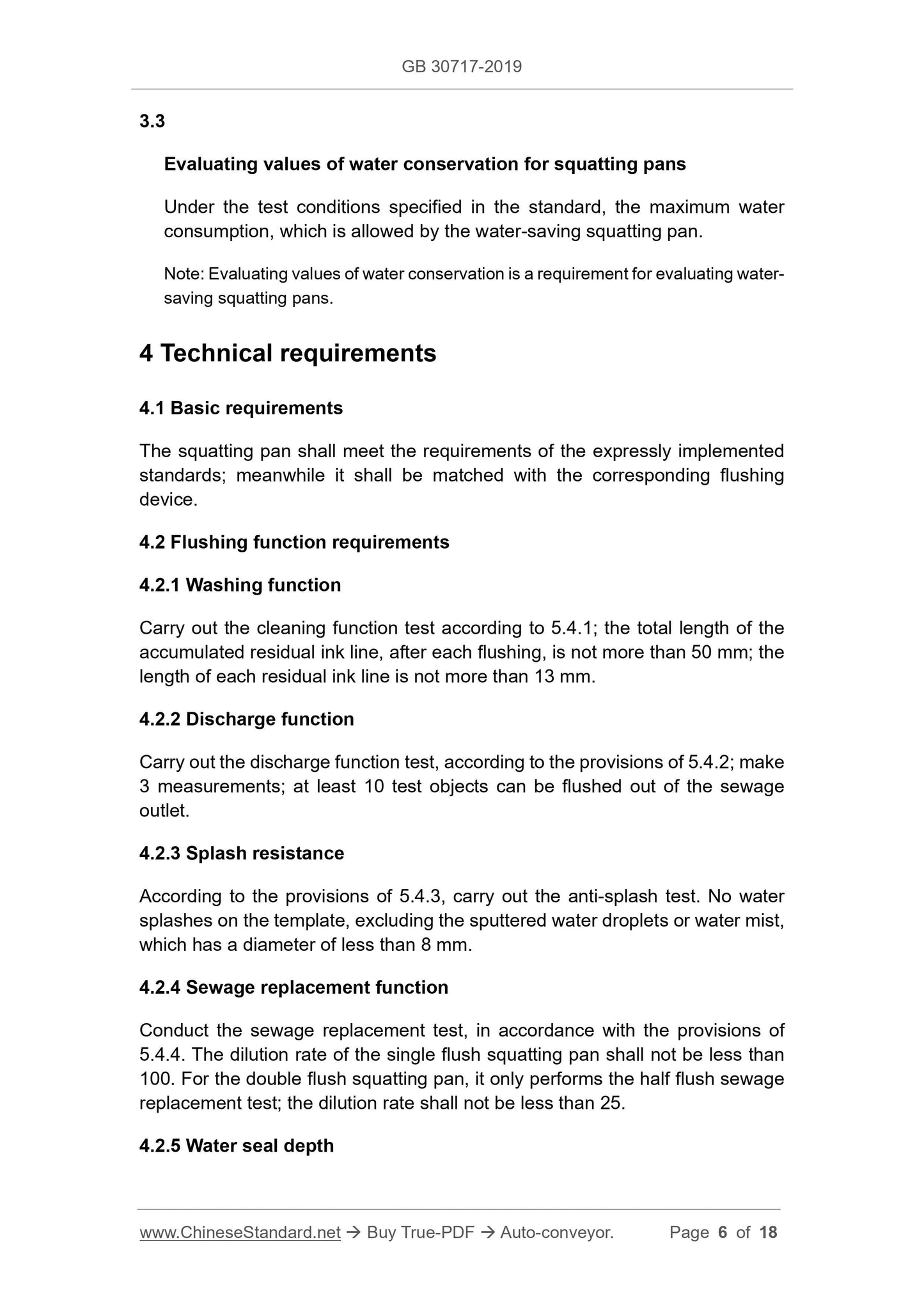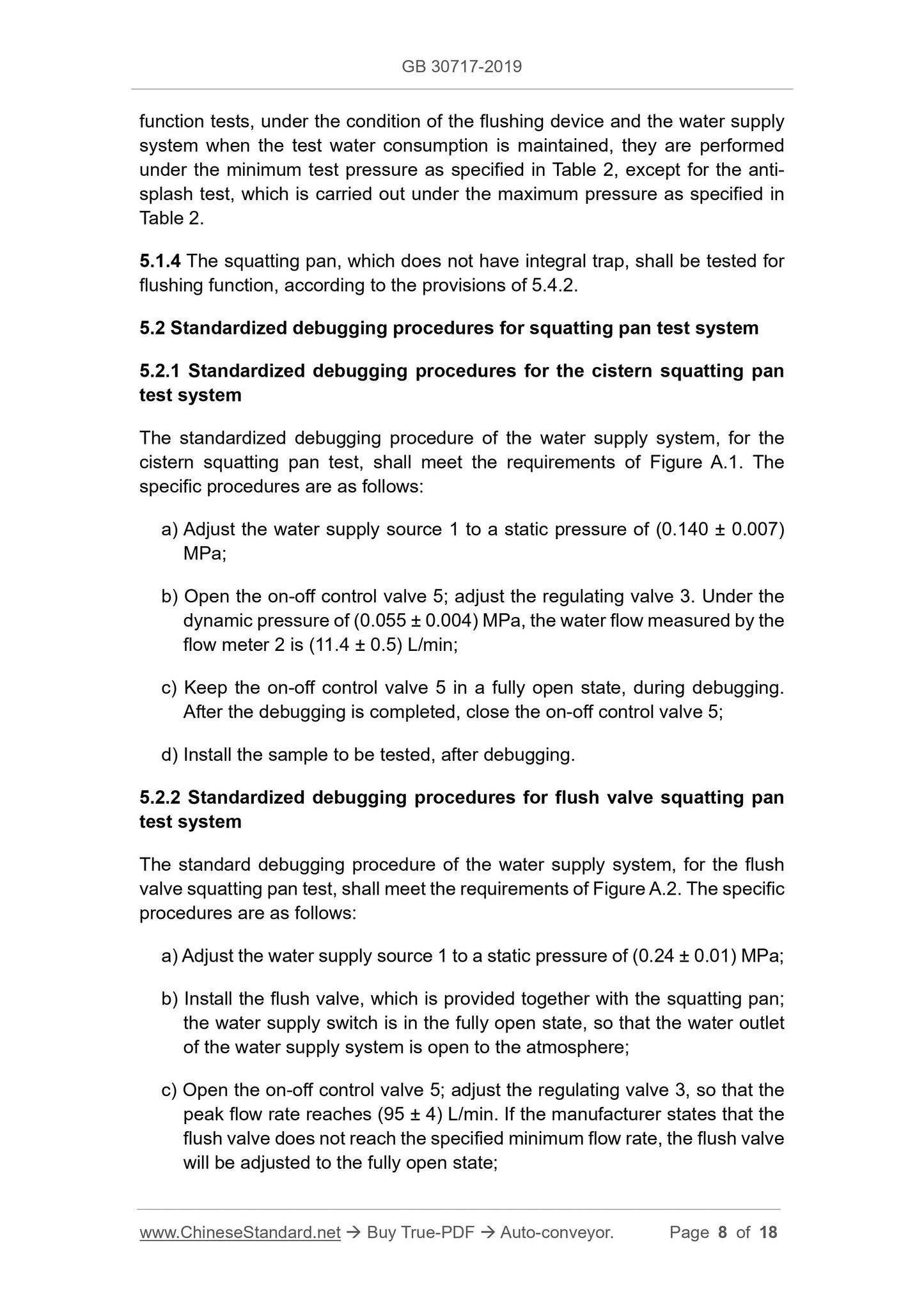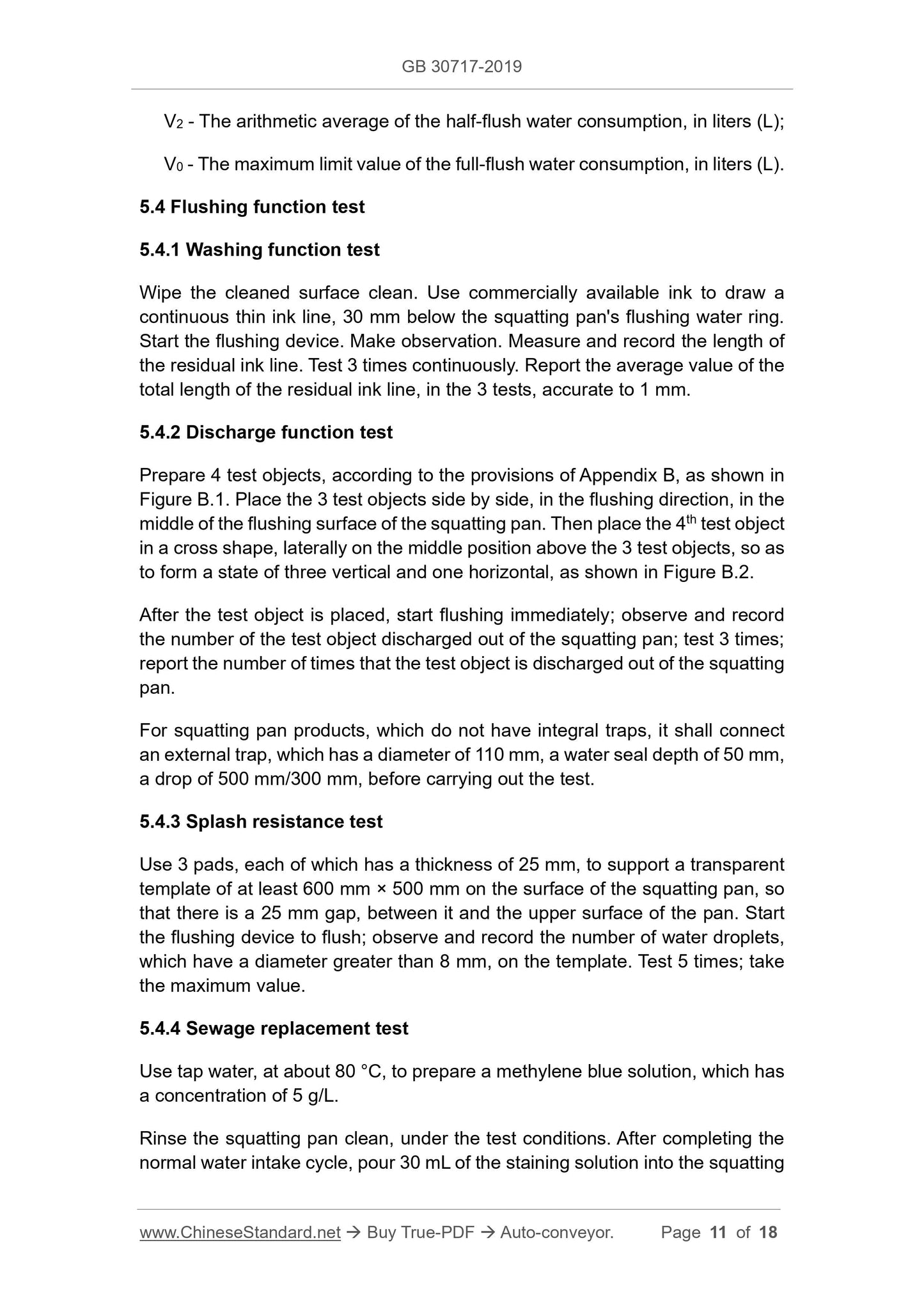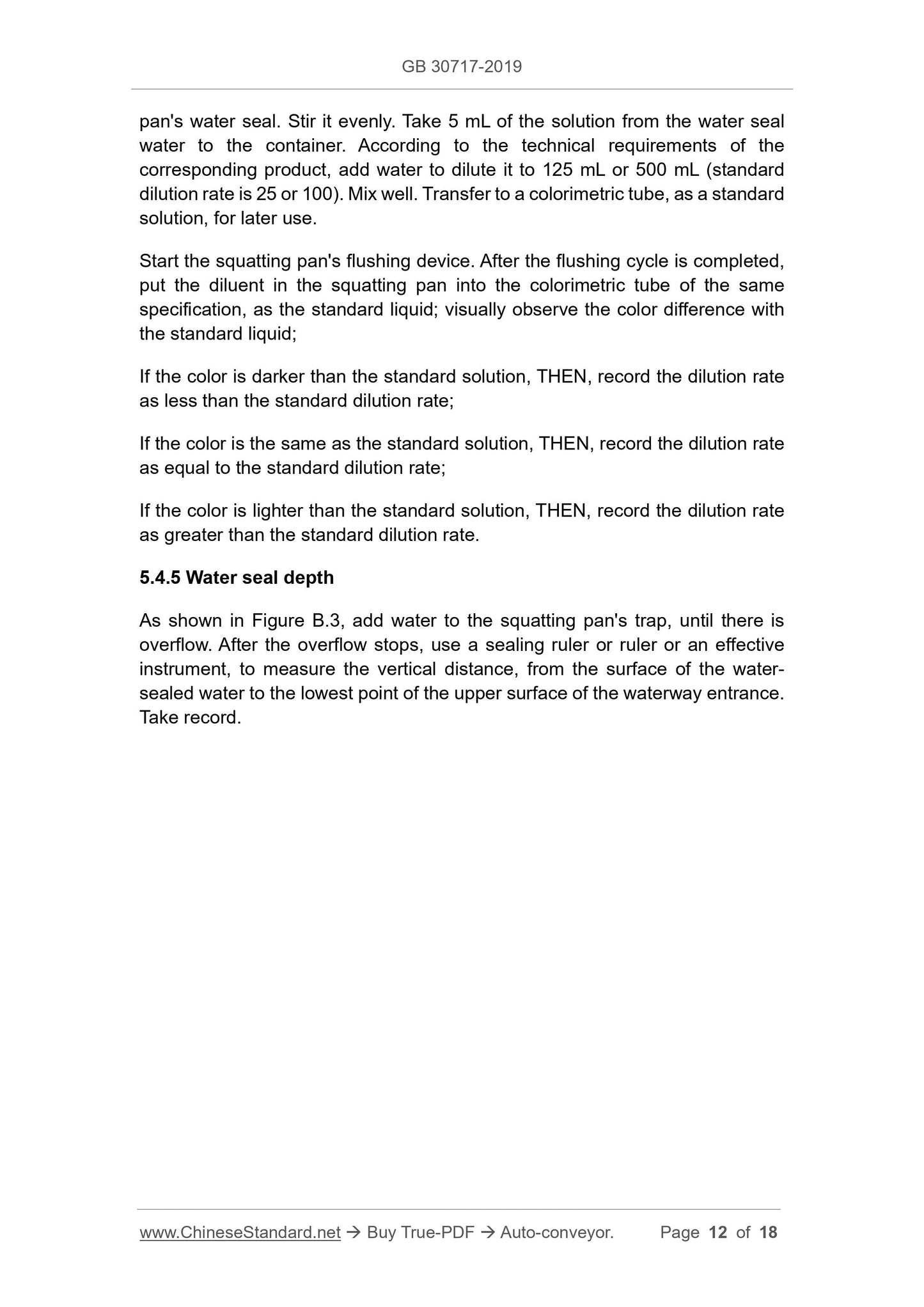1
/
of
7
www.ChineseStandard.us -- Field Test Asia Pte. Ltd.
GB 30717-2019 English PDF
GB 30717-2019 English PDF
Regular price
$230.00
Regular price
Sale price
$230.00
Unit price
/
per
Shipping calculated at checkout.
Couldn't load pickup availability
GB 30717-2019: Minimum allowable values of water efficiency and water efficiency grades for squatting pans
Delivery: 9 seconds. Download (and Email) true-PDF + Invoice.Get Quotation: Click GB 30717-2019 (Self-service in 1-minute)
Newer / historical versions: GB 30717-2019
Preview True-PDF
Scope
This standard specifies the water efficiency limit value, water saving evaluationvalue, water efficiency grade, flushing function requirements, test methods of
squatting pans.
This standard is applicable to the water efficiency evaluation of squatting pans
(not including infant's type), which are installed on the cold water supply
pipelines within buildings AND have the hydrostatic pressure of the water
supply not greater than 0.6 MPa.
Basic Data
| Standard ID | GB 30717-2019 (GB30717-2019) |
| Description (Translated English) | Minimum allowable values of water efficiency and water efficiency grades for squatting pans |
| Sector / Industry | National Standard |
| Classification of Chinese Standard | Q31 |
| Classification of International Standard | 91.140.70 |
| Word Count Estimation | 12,124 |
| Date of Issue | 2019-12-31 |
| Date of Implementation | 2020-07-01 |
| Issuing agency(ies) | State Administration for Market Regulation, China National Standardization Administration |
Share
